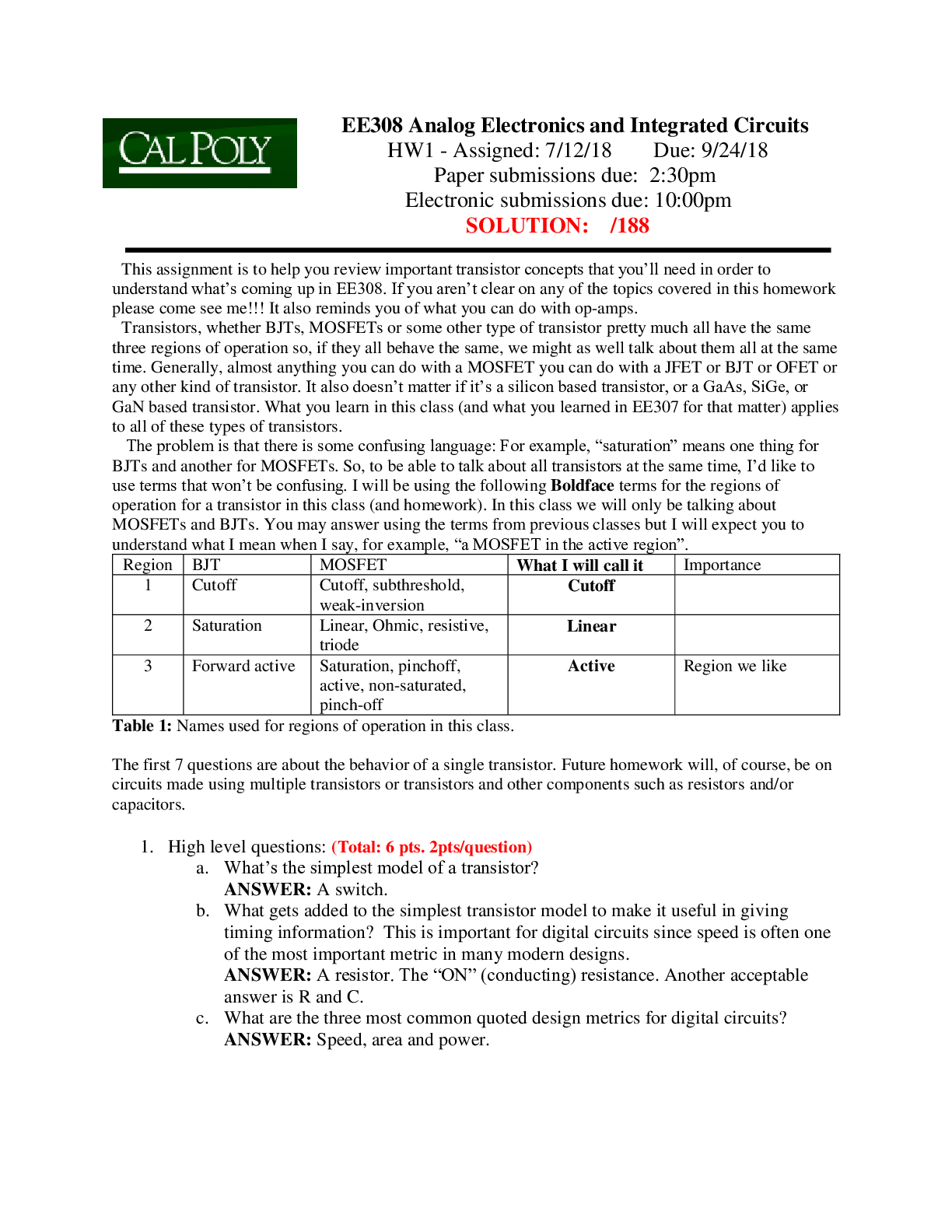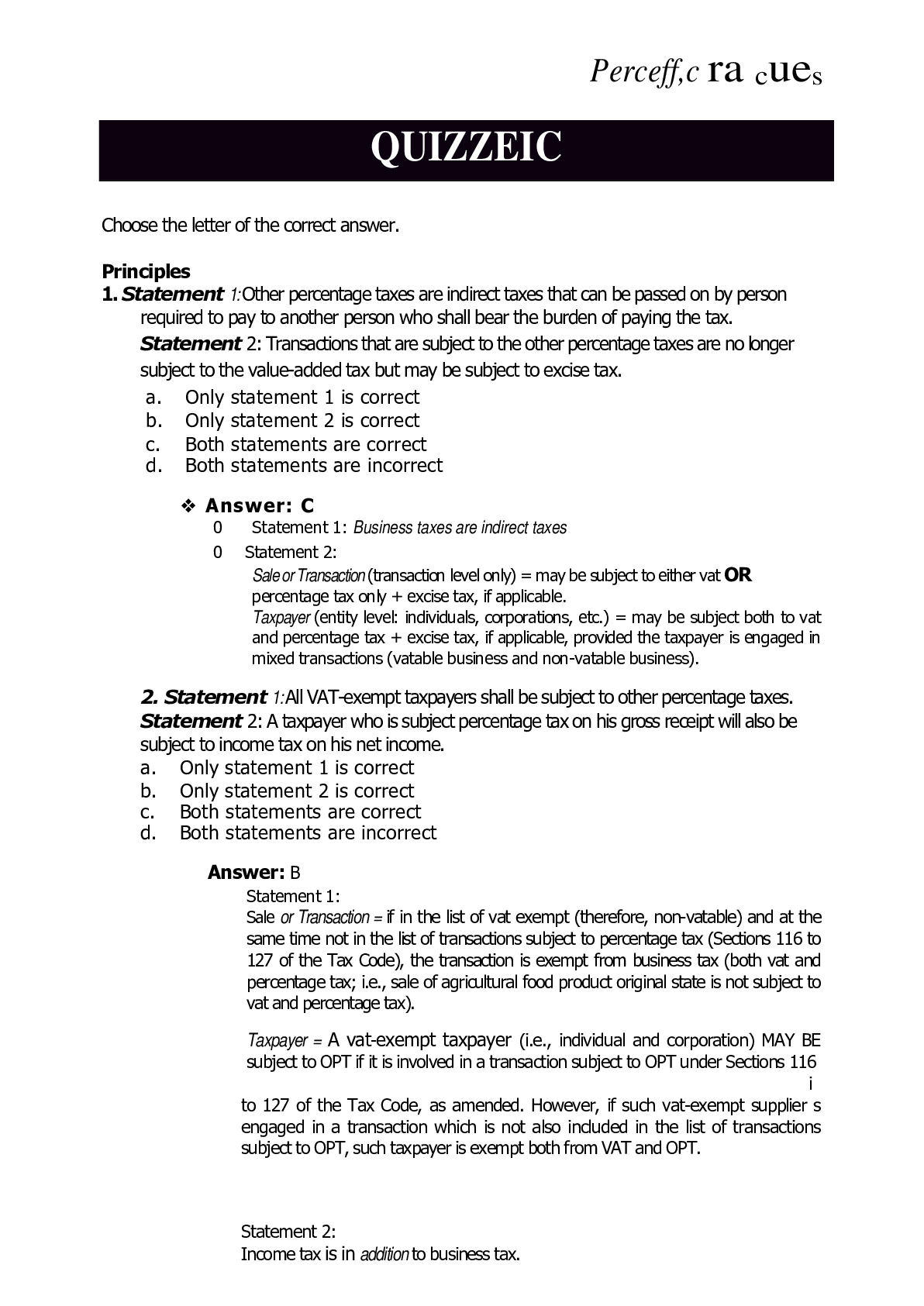Electrical Engineering > Solutions Guide > California Polytechnic State University, San Luis Obispo - EE 308EE308_HW1_F2018reviewSoln (All)
California Polytechnic State University, San Luis Obispo - EE 308EE308_HW1_F2018reviewSoln
Document Content and Description Below
This assignment is to help you review important transistor concepts that you’ll need in order to understand what’s coming up in EE308. If you aren’t clear on any of the topics covered in this h... omework please come see me!!! It also reminds you of what you can do with op-amps. Transistors, whether BJTs, MOSFETs or some other type of transistor pretty much all have the same three regions of operation so, if they all behave the same, we might as well talk about them all at the same time. Generally, almost anything you can do with a MOSFET you can do with a JFET or BJT or OFET or any other kind of transistor. It also doesn’t matter if it’s a silicon based transistor, or a GaAs, SiGe, or GaN based transistor. What you learn in this class (and what you learned in EE307 for that matter) applies to all of these types of transistors. The problem is that there is some confusing language: For example, “saturation” means one thing for BJTs and another for MOSFETs. So, to be able to talk about all transistors at the same time, I’d like to use terms that won’t be confusing. I will be using the following Boldface terms for the regions of operation for a transistor in this class (and homework). In this class we will only be talking about MOSFETs and BJTs. You may answer using the terms from previous classes but I will expect you to understand what I mean when I say, for example, “a MOSFET in the active region”. Region BJT MOSFET What I will call it Importance 1 Cutoff Cutoff, subthreshold, weak-inversion Cutoff 2 Saturation Linear, Ohmic, resistive, triode Linear 3 Forward active Saturation, pinchoff, active, non-saturated, pinch-off Active Region we like Table 1: Names used for regions of operation in this class. The first 7 questions are about the behavior of a single transistor. Future homework will, of course, be on circuits made using multiple transistors or transistors and other components such as resistors and/or capacitors. [Show More]
Last updated: 2 years ago
Preview 1 out of 14 pages

Buy this document to get the full access instantly
Instant Download Access after purchase
Buy NowInstant download
We Accept:

Reviews( 0 )
$7.00
Can't find what you want? Try our AI powered Search
Document information
Connected school, study & course
About the document
Uploaded On
Mar 28, 2021
Number of pages
14
Written in
Additional information
This document has been written for:
Uploaded
Mar 28, 2021
Downloads
0
Views
115













